Are win streak systems the hottest new monetization mechanic? Gardenscapes had a busy month in October with numerous updates and tweaks to gameplay systems, many of which were focused on streak systems. This reflects recent market trends, such as the heavy focus on streak system evolution by Angry Birds: Dream Blast, which we explored in the August edition of the Analyst Bulletin.
Speaking of trends, HABBY’s latest release, Capybara Go!, is a new roguelite game out of Japan capitalizing on the viral Capybara Tik-Tok trends. After taking the Asia market by storm, do these lovable Capybaras have a strong enough bite to leave a mark when the game hits the US later this month? Or will players in the West be too busy playing the recent Age of Empires mobile release and Pokémon TCG Pocket? More on both of those titles in this month’s bulletin!
Finally, the re-release of Hearthstone, following the end of its dispute with Netease, saw it significantly surpass its pre-hiatus status, while a new season event in League of Legends: Wild Rift provided League fans with plenty of things to do as they counted down until the release of Arcane: Season 2.
You’ll find much more on these updates, as well as the latest events and trends from the casual and midcore markets, below!
October’s casual game updates
Gardenscapes landscaped its LiveOps calendar extensively in October, making several changes to its win streak systems while adding new events.
First up was Super Rainbow Blast, an all-new charge-and-sustain type power-up system where players need to complete 10 levels to activate an upgraded version of the standard Rainbow Blast boost and then maintain a winning streak to keep it active. The system is heavily reminiscent of Royal Match’s Super Lightball win streak, which is functionally almost identical. Alongside Gardenscapes, several other popular puzzle titles have released similar updates since Super Lightball launched in the summer of 2023, including Zen Match, TwistedTangle, and many more.
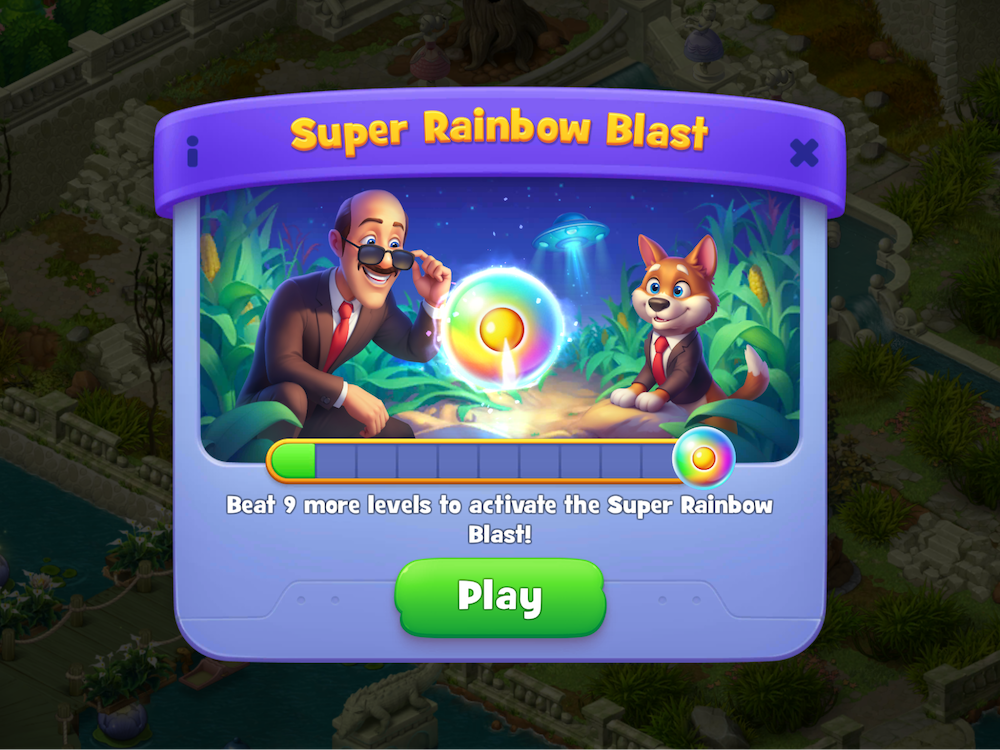
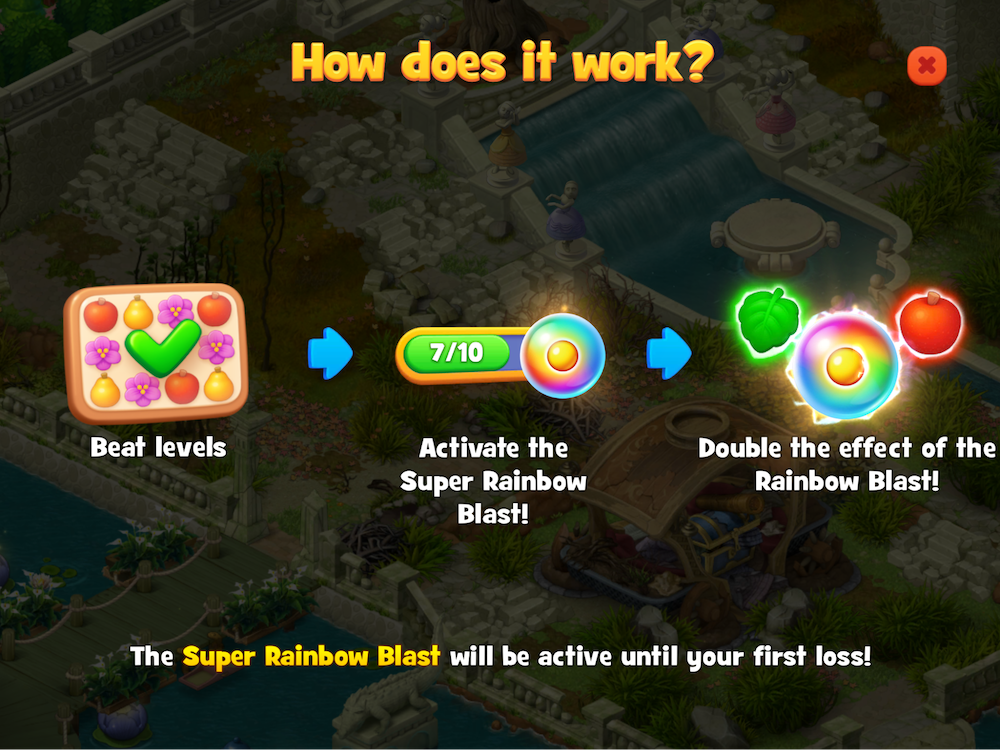
Catch a Wave, a trending win streak tournament event, was also tested in October. The event adds a win streak-based point multiplier to the regular tournament experience, supercharging the competitive aspect of the event.
These win streaks are another popular trend in the puzzle market, being implemented across 45% of the top titles in that genre. The first title to use these streaks was Toon Blast’s Shield Clash event, which launched back in July 2023. Generally, their basic premise is that players need to maintain the maximum possible streak in order to stay competitive, which means they’re more likely to opt for IAP when things go wrong. Developers can easily apply win streaks to almost any live event type—including minigames, battle passes, leaderboards, and many others—which helps to explain why they’ve become so prevalent.
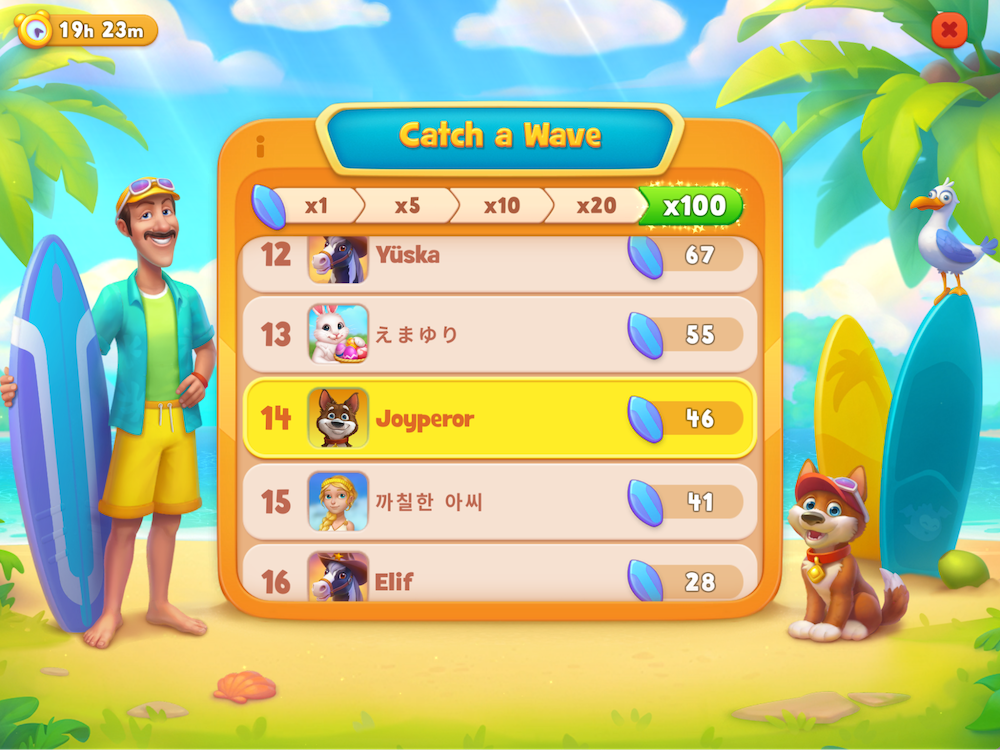
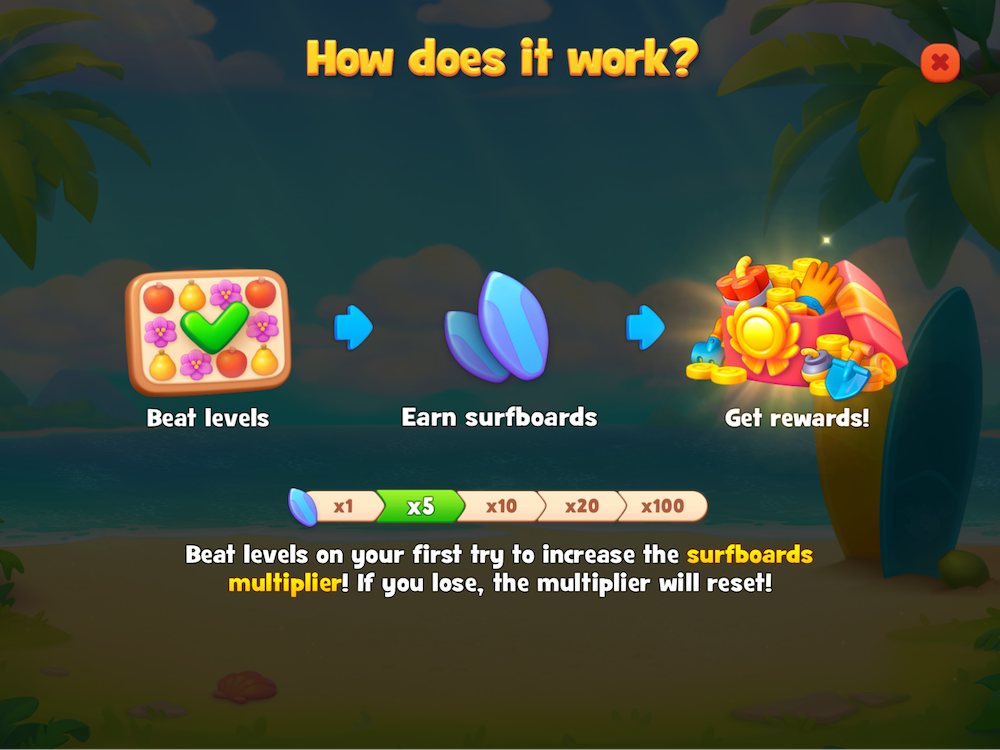
In support of exploration minigame events, a new boost event called Lucky Hour—renamed Lucky Break in November—was introduced. This one-hour flash event offers a 30% discount on the energy needed to clear obstacles in the exploration event. Similar limited-time flash events have become popular in casual mobile games, but this type of energy discount event is especially common in tycoon/adventure games that share the core gameplay of exploration events. The sense of urgency for a game where the core monetization loop is built around energy running out has turned out to be a strong mechanic.
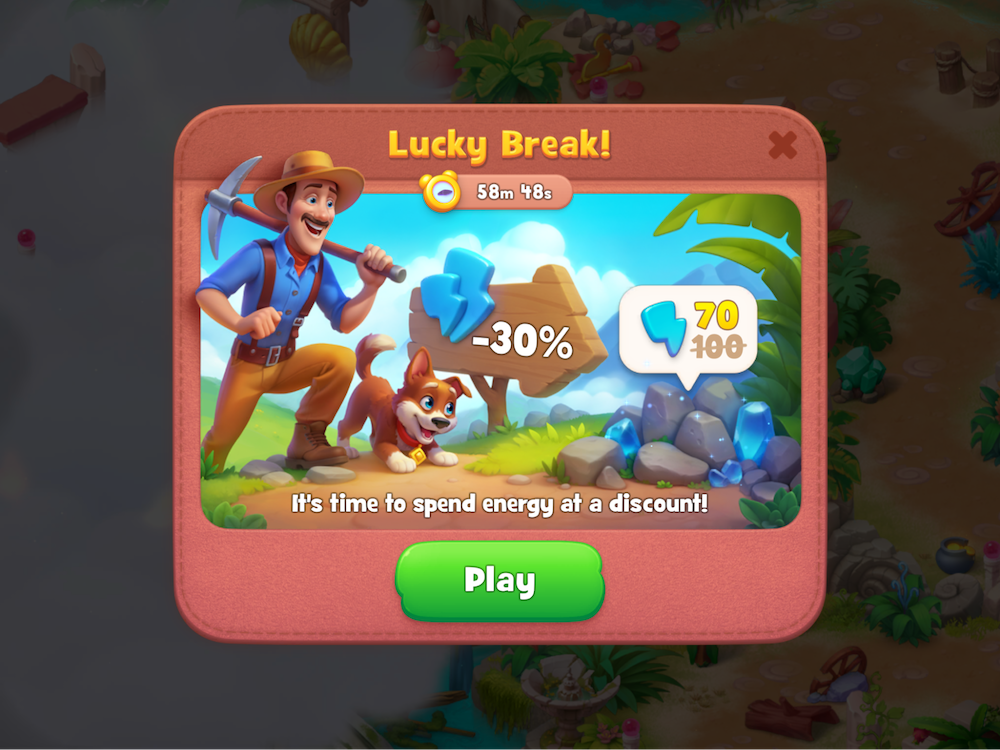
Merge2 developer Microfun also experimented with some interesting minigame events in October. A vending machine minigame event called Big Drop Rush was added to Gossip Harbor. It featured a leaderboard with rewards that players could obtain after reaching a certain amount of points.
Seaside Escape also added the Fairground Challenge event, which featured selectable difficulty levels. This is an interesting approach, as we haven’t seen difficulty levels too much in event design apart from the season passes in games such as Candy Crush Soda Saga and Dragonball Legends.
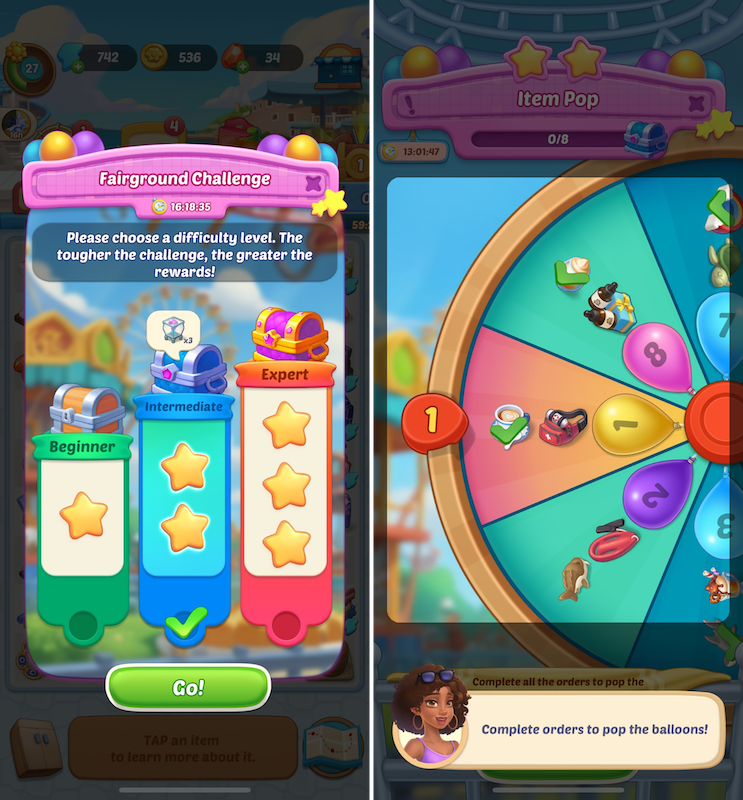
Mattel’s Phase 10: World Tour added a new PvP minigame event called Pirate Duel. The event introduced a Battleship-type minigame where you duel one opponent at a time, trying to sink their ships and earn rewards. Players need to play Black Cards in the Journey Mode to get Cannonballs for use in the Duels. This is a unique PvP version of the trending digging minigame format we have seen in multiple top-grossing titles, such as State of Survival, Monopoly GO!, Royal Match, and BTS Island.
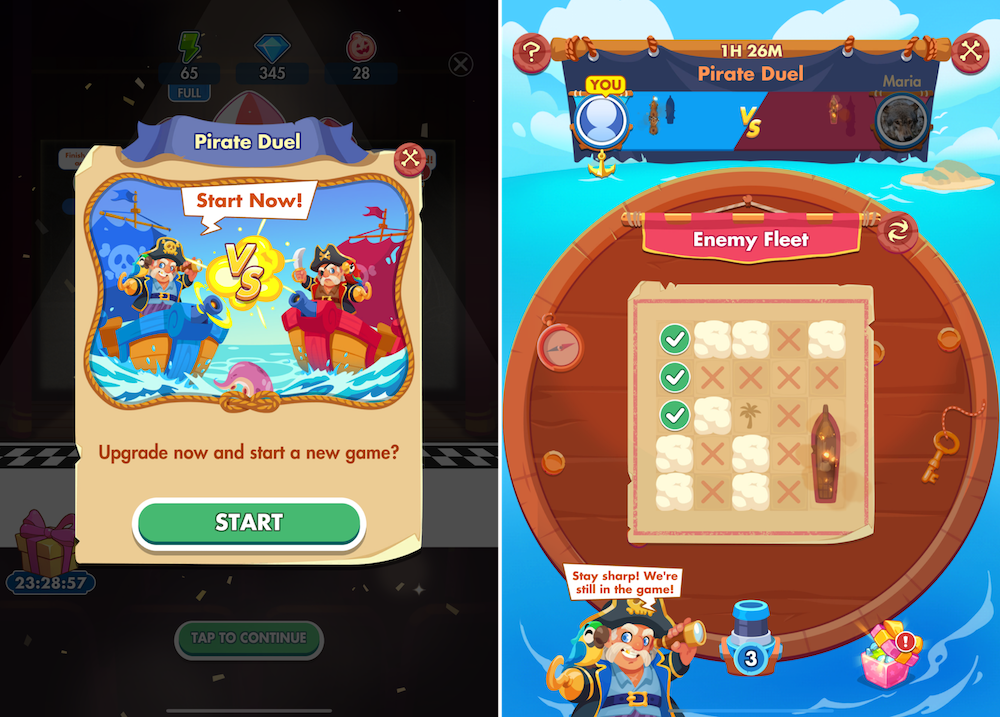
Coin Master opted for cooperative gameplay over shovels when it introduced its first-ever co-op task event, Plant Buddies. This event lets players team up with up to four friends and grow a plant that unlocks shared rewards. To support the event, a special event currency, “Sunshine,” was introduced through core gameplay and used to gain points. The event will be immediately familiar to any Monopoly GO! fans, as it’s inspired by that title’s immensely popular Partner Events, which have also cropped in many other titles—including Royal Match, Klondike Adventures, and more.
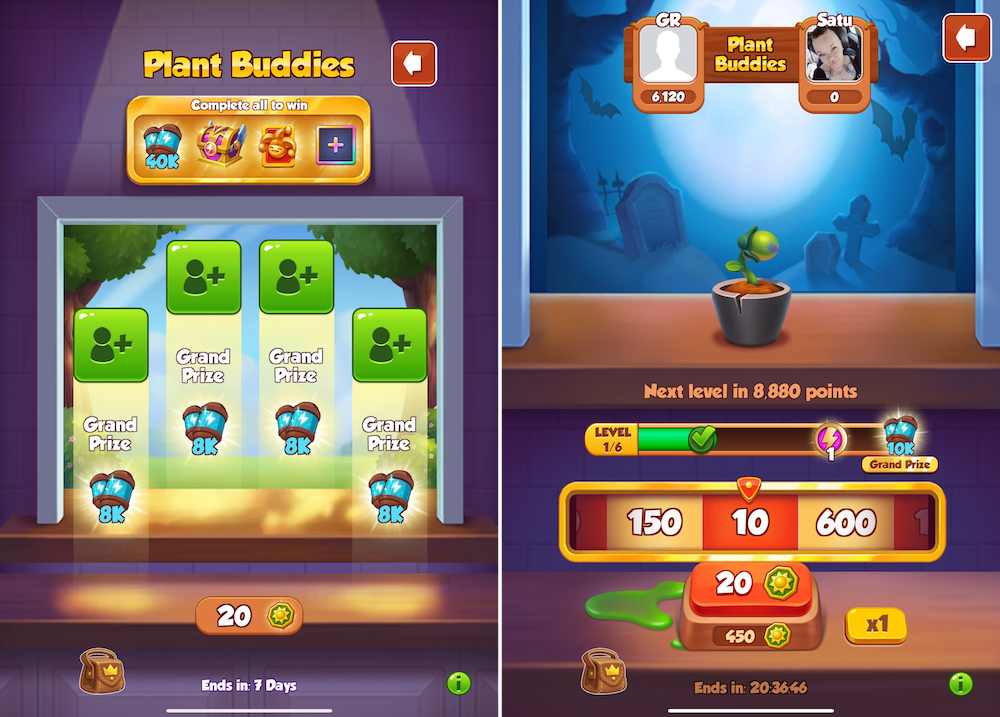
Additional casual gaming highlights and other news
Blizzard’s CCG Hearthstone has been relaunched in China after a dispute with its publisher NetEase saw it taken offline in the country along with other popular games. The game’s relaunch featured a major giveaway of past cards in addition to log-in rewards, card backs, and coin skins in a special “China-exclusive return pass”, boosting its performance to impressive heights, peaking at GR 3 and DL 5. The game’s current performance significantly surpasses its pre-hiatus status from November 2022.
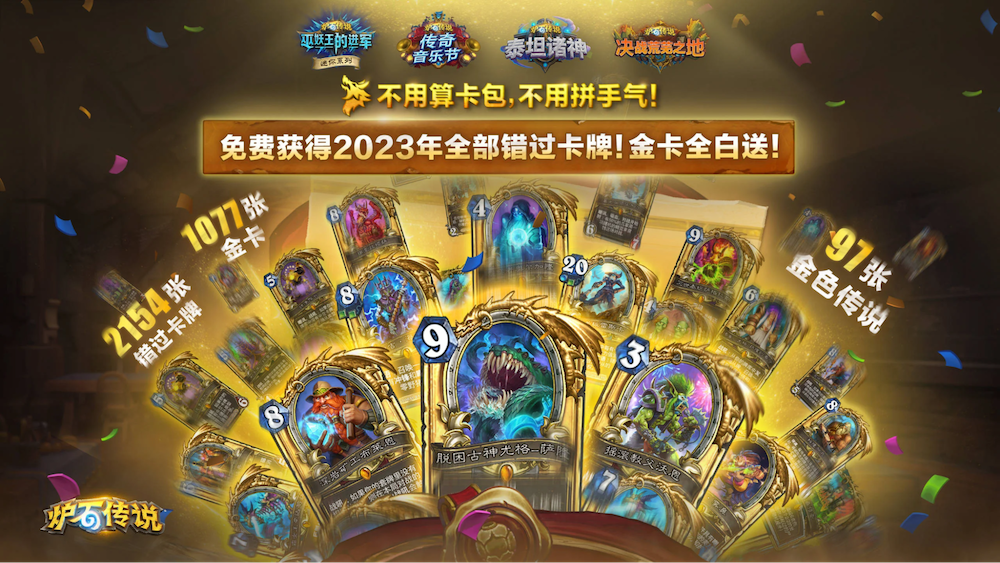
Capybaras have always been popular animals in Japan and South America, but 2023 took their infamy to international heights thanks to viral TikTok trends and the Capybara song. The mobile market has never shied away from an opportunity to gamify viral trends, and HABBY’s latest roguelite game, Capybara Go!, has been a huge success since its release in Japan and Asia.
The game follows the true and tested HABBY “recipe” of mixing roguelike elements with casual gameplay, a permanent stat boost progression, and simple equips, as seen in Archero or Survivor!.io. The gameplay is essentially about spinning a roulette repeatedly and progressing through random “encounters” that grant different powerups or downs.
In true roguelike fashion, the idea is to advance as far as you can in a Chapter without losing all your HP, after which you get to use your earned resources to upgrade the capybara and its equips and try again. While the gameplay mechanics are similar to those of other HABBY titles, the fully randomized progression is a new twist that gives the game a social casino feel. It will launch in the US later this month, and we’ll be keeping a close eye on its performance.
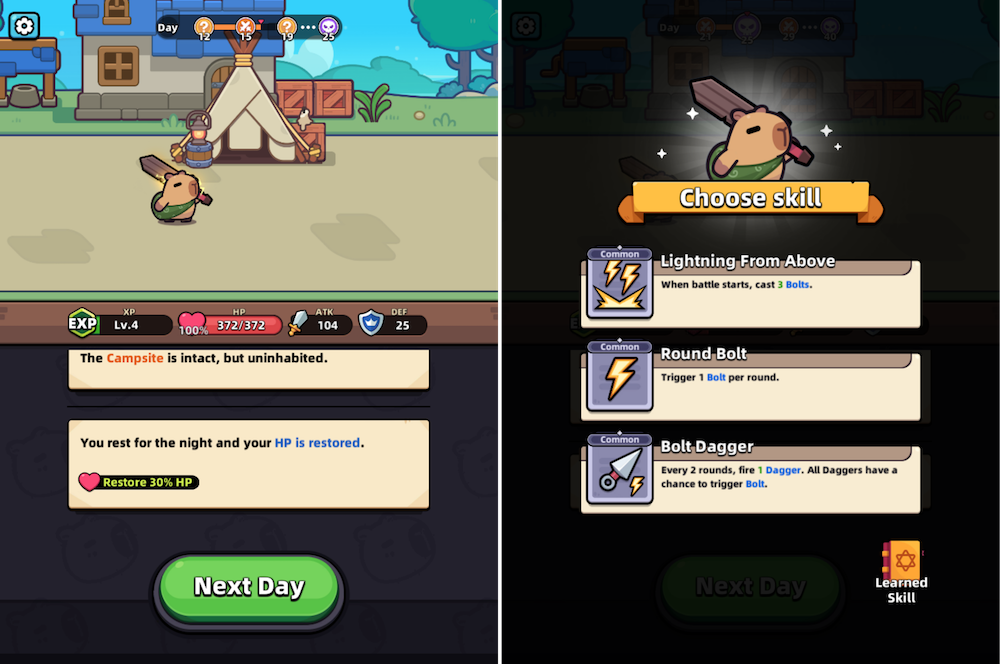
October’s midcore game updates
Clash Royale revamped its Lucky Drop rewards by adding a star rating, with higher ratings giving better rewards. Players can also get more of them from Daily Tasks. The battle pass and Lucky Drops also have more rewards inside.
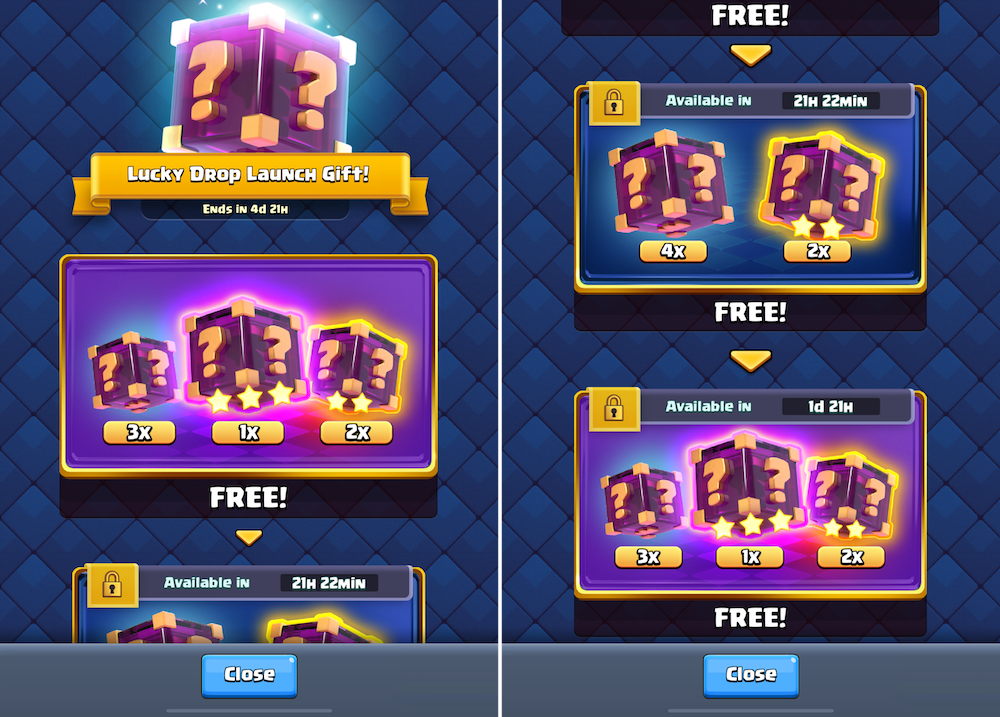
League of Legends: Wild Rift introduced another event ensemble similar to last season’s “Season Adventure.” This season’s event ensemble consists of three approximately 20-day “phases” connected by unique, titled event calendars and the “Key of Inequity” event tokens, which can be earned from all the seasonal events and exchanged for rewards in the event shop. The first two parts of this season’s ensemble were the “Anniversary Celebration” and “Cheers to Arcane”, with the third yet to come.
Having larger seasonal themes and other “overarching events” that interconnect a large set of events together through in-game elements, such as an event menu, theme, or even a currency and shop, has been a trend for a while now in midcore games. Wild Rift seems to have adopted this event style now to connect its current high cadence of various events, which has seen a tremendous increase during the past few years.
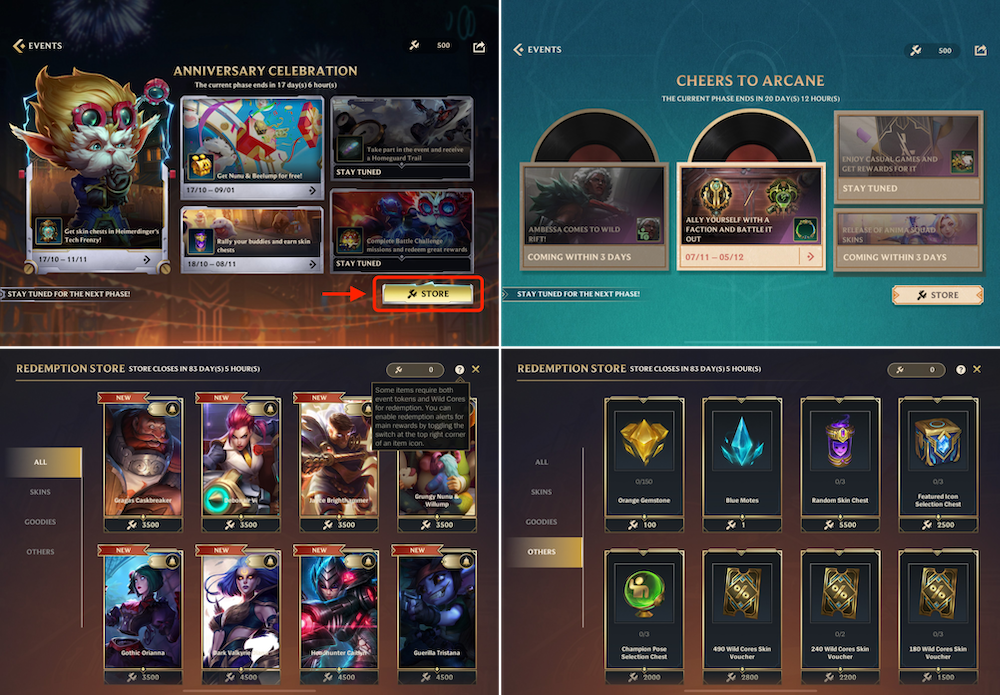
Additional midcore gaming highlights and other news
One of the most popular real-time strategy (RTS) games of all time finally debuted on the mobile market – this time as a 4X game. In Age of Empires Mobile, players collect historical characters (reminiscent of the latest Age of Empires 4) and use them to reenact famous battles in the solo campaign.
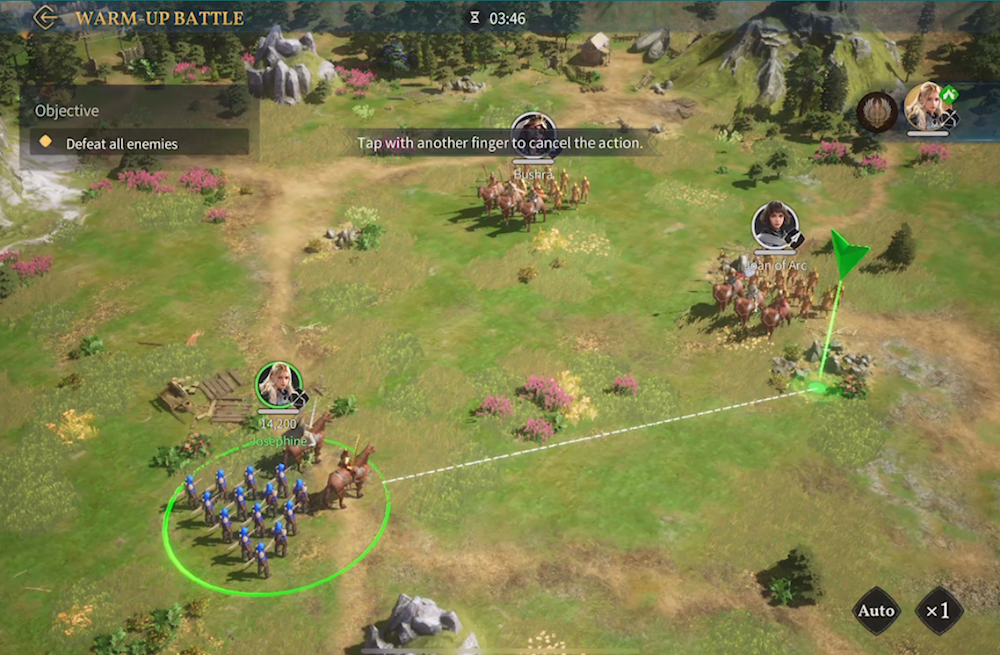
While this is a 4X game, the influence of the RTS genre can be seen in some game modes where players can freely move their units a bit on the battlefield, and the same “rock-paper-scissor” counterplay with archers, pikeman, cavalry, and swordsmen. Players can also change their Civilization just like the mainline entries, with each Civilization coming with different buffs and unique Units while changing the appearance of the player’s base.
However, you could argue that this mobile game could have done more to stay true to the series roots—for example, the PC installments feature hero characters, which are completely absent here. Several other fan-favorite aspects of the franchise are missing, such as the classic meme quote “wololo” from unit conversions in Age of Empires. That may explain why the game has since started to fall down the grossing ranks, despite an initial strong launch in the top 50.
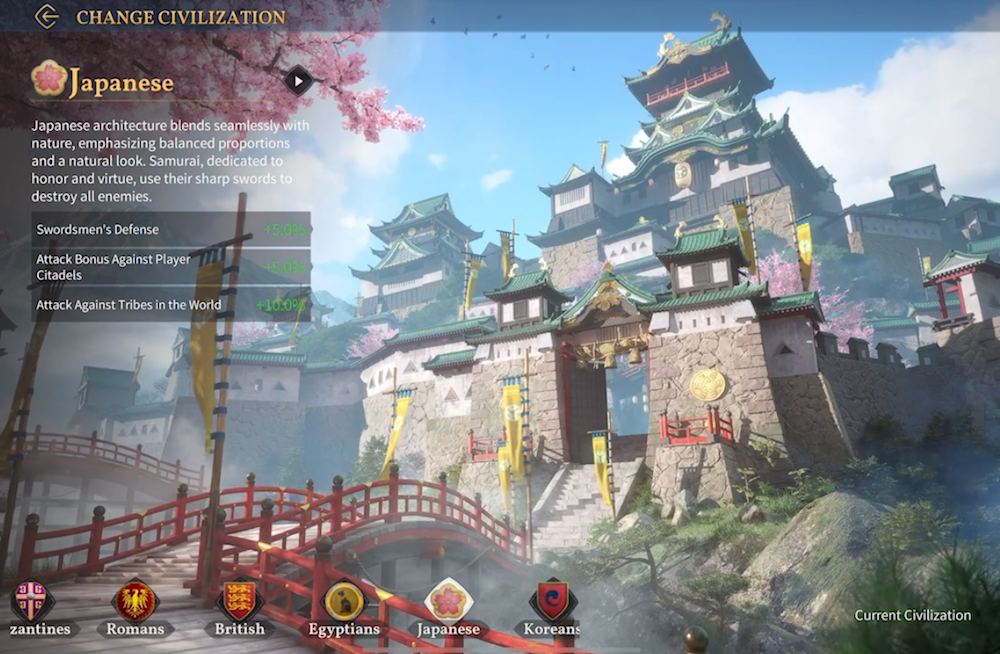
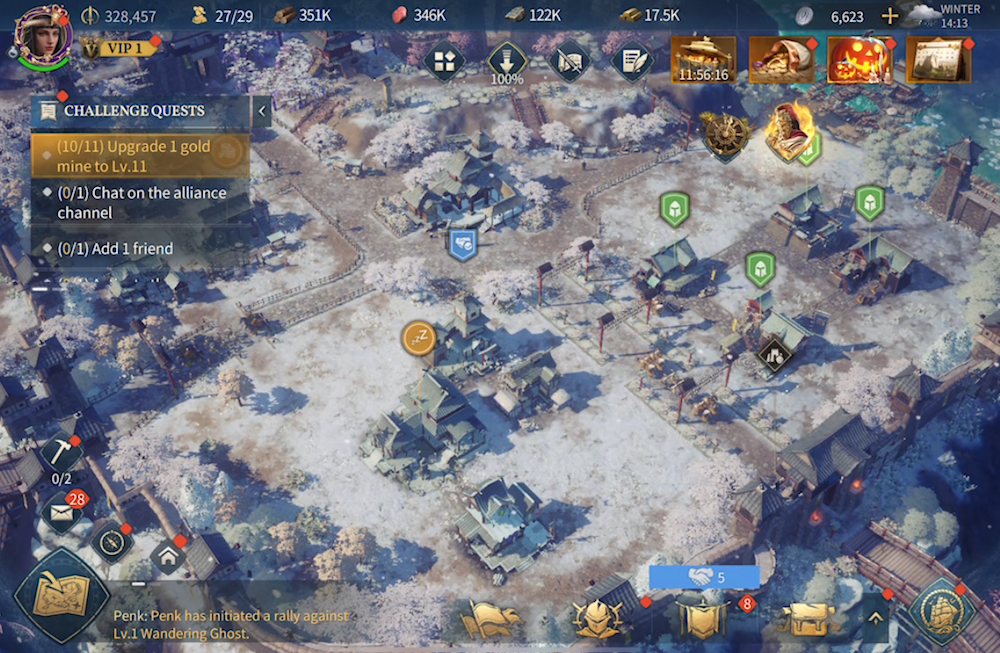
Speaking of big franchises making a return, October ended with the launch of Pokémon TCG Pocket, which has been holding top positions in the GR downloads and top-grossing charts since then. The game dominates the number one spot in the Japanese market in both downloads and grossing ranks. The US is not that much different, as the game places steadily in the top-grossing 10 day after day.

The game mainly focuses on collecting cards and opening booster packs. The battling aspect is treated almost as a side mode that is introduced fairly late into the first-time user experience through guided tutorials. This is a completely different SKU from the other Pokemon TCG Live, although the launch of Pocket has seen downloads for TCG Live grow by 80% on iOS in the US.
The Booster pack opening experience is made to be as close to real-life experience as possible. In the gacha pull sequence, players can rotate the decks to search for bent corners, and decks can be opened forward or backward facing. Cards can also be rotated around to admire the effects they have. Some cards even go beyond the real world, as players can get a virtual tour of the scenery within them.




















